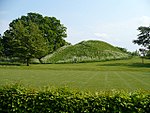Shire Hall, Cambridge
Buildings and structures in CambridgeCounty halls in EnglandGovernment buildings completed in 1932Use British English from April 2022

Shire Hall is a former municipal building in Castle Hill in Cambridge, Cambridgeshire, England. It was the headquarters of Cambridgeshire County Council from 1932 until 2021, when the council moved to New Shire Hall at Alconbury Weald, some 23 miles from Cambridge.
Excerpt from the Wikipedia article Shire Hall, Cambridge (License: CC BY-SA 3.0, Authors, Images).Shire Hall, Cambridge
Magrath Avenue, Cambridge
Geographical coordinates (GPS) Address Nearby Places Show on map
Geographical coordinates (GPS)
| Latitude | Longitude |
|---|---|
| N 52.213 ° | E 0.1141 ° |
Address
Magrath Avenue
CB4 3AH Cambridge
England, United Kingdom
Open on Google Maps








